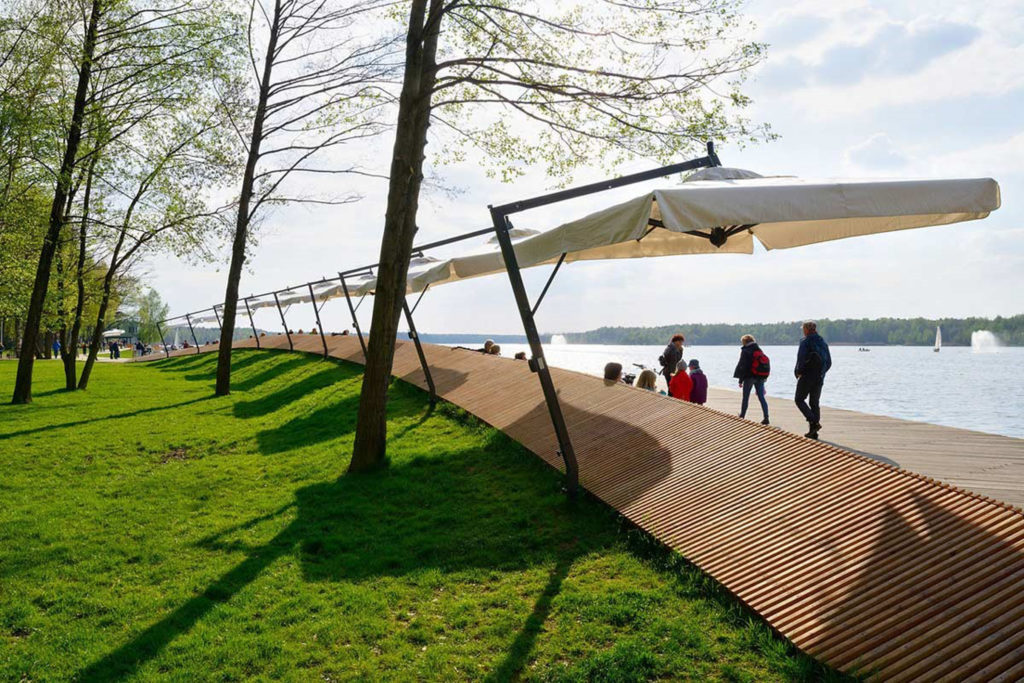
Architect
Robert Skitek
Type of Area
Natural lake
Land/water interaction
Sandy beach
Promenade
Terraces/ steps
Built Environment Types
Low built
High green
Scale of Impact
District/ neighbourhood
City
Regional
Intervention Scale (Spatial)
Linear development – multiple interventions
Project Types
Seafront development
Outdoor recreation
Public green space regeneration
Urban/ Rural
Sub-urban area
Visibility and Openness
Partly enclosed
Partly contained
A Meandering Lakefront Promenade
The town of Tychy in Poland sits directly on an extensive lake, separated from it by some forest.
In this project, realised in 2014 by Robert Skitek, a promenade formed from wooden decking runs along a stretch of the shoreline, facing out to the lake. It appears to be completely natural as the town is behind and out of sight. According to the designers, the concept is based on a meandering wooden promenade along the lake shore snaking over the lake and back again.
This design permits different views and feelings of space to be obtained from various points along the promenade. The pedestrian/bicycle path mainly runs parallel with the shore but where it runs over the water, the path dips to almost touch the lake.
On the promenade there are several unique elements such as an opening in the decking with a net stretched over the water, where people recline, and specially designed benches. In addition, there is a new sandy beach and outdoor gym.
The materials, mainly natural ones, were selected to emphasise the natural character of the site and landscape. Part of the site was covered with specially shaped landforms planted with grass. The promenade, benches and railings are all made of softwood.
Hard surfaces such as bike parking and areas under the gym equipment were constructed from water permeable mineral aggregates. Steel beams were attached to concrete piles driven into the floor of the lake to support the promenade over the water. All illumination is by energy-saving LED lights.
Perception and Meaning
Place identity
Imageability
Sense of place
Place attachment
Accessibility
Health and Wellbeing
Restorativeness
Increased physical activities
Aesthetic experience
Increases socialisation
Place affordance
Interaction with Water
Visual

This project is very accessible although it is not visible from a distance due to the forest behind the waterfront screening views. Design quality is rated as moderate but this is not necessarily an issue in the context.
As a very natural area the absence of references to cultural heritage is not to be expected, there are no landmarks and the project appears to be expensive to maintain (lots of timber). It scores highly for most aspects of facilities although some could be more accessible to disabled people.
The health and well-being potential is excellent, mainly since the area is set within a forest with no signs of human activity Water accessibility and connections are also excellent although water safety equipment is not very evident.
Physical activity opportunities are good, although children’s play is not obviously well provided for nor are formal sports – although this is probably not a part of the project brief.
Overall an interesting and novel project which has some unusual features but which also requires a lot of maintenance.
